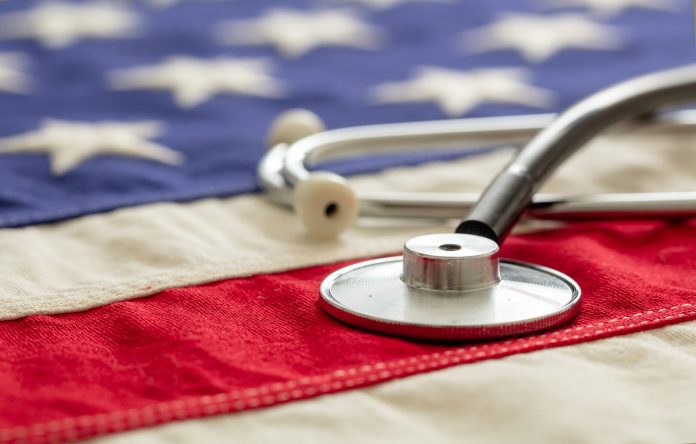Maximilian Buja, MD from McGovern Medical School, The University of Texas Health Science Center at Houston, highlights challenges in imparting clinical skills in contemporary undergraduate medical education & graduate medical education
Introduction
Beginning in the late twentieth century and continuing into the present time, major changes have taken place in undergraduate medical education (UME) and graduate medical education (GME), based on the general rationale that changing times require fundamentally different educational approaches to produce physicians with needed new skill sets (Buja, 2019). Yet, there are paradoxes in contemporary medical education. The fully integrated UME curriculum is promoted as the optimal model to produce physicians with skills in modern clinical reasoning and decision-making (Brauer and Ferguson, 2015). Yet, the solid grounding in the basic biomedical sciences and the pathology and pathophysiology of disease required for high-level clinical reasoning and decision-making have been diminished.
There is strong momentum toward competency-based medical education (CBME) with an enhanced integration of UME and GME built around measurable milestones and entrustable professional activities (EPAs) (Powell and Carraccio, 2018). CBME is regarded as an optimal learner-centric educational system that can bring about a healthcare system with an enhanced patient-centric healthcare system.
Yet, there is evidence that history taking and physical examination skills of medical trainees have been greatly deteriorating over the past 20 years. Blatant examples have been documented of poor interviewing skills by students, skills which are key to problem detection and accuracy of diagnoses (Faustinella and Jacobs, 2018). Thus, the reality is in contrast to the rhetoric. It, therefore, behoves academic medical institutions to examine the possible causes leading to the decline of specific clinical skills such as history taking and physical examination to mitigate the problem.
Reasons for the decline of clinical skills
Traditionally, bedside teaching has been regarded as the ideal clinical teaching modality, in which history taking and physical examination skills can be displayed together with professional behaviour (Faustinella and Jacobs, 2018; Kirk, 2007). The erosion of bedside teaching and the consequent decline of clinical skills have several causes: undervaluing of clinical skills, excessive reliance on diagnostic imaging and tests, disproportionate time spent at the computer, and limited time for ward bedside rounds and teaching. This is due in part by the fact that attending physicians, residents, and students are faced with competing demands for their time and attention.
Appropriate and comprehensive history taking is often more challenging than conducting a physical examination. Medical students and residents often have difficulty taking a pertinent history and deciding which data of the review of systems, past medical history, and psychosocial/family history are relevant to a specific patient’s case. The result is that it is often difficult if not impossible to obtain an accurate account of the symptoms as experienced by the patient. Together with the medical history, the physical examination aids in determining the correct diagnosis and developing the treatment plan. Insufficient or ineffective history taking skills may also be linked to an inadequate knowledge base, as pointed out in the introduction.
Importance of the clinician-educator
The underlying causes of this deterioration of clinical skills such as history taking, and physical examination are complex and represent a significant challenge to academic medical institutions. While a multifactorial phenomenon, the fundamental issue is that academic teaching hospitals affiliated with medical schools often have an environment that, paradoxically, does not foster the proper instruction of bedside clinical skills (Faustinella and Jacobs, 2018). The mission statements of academic institutions traditionally have tripartite components of research, education and clinical service. In reality, medical schools value as their greatest assets funded research and procedural subspecialties which bring in high-revenue patients. This leads to medical education sometimes taking a backseat to the income-generating endeavours of research and clinical work. Performance evaluation in academia is weighted towards research indicators, while teaching and primary care, both critical to the development of solid clinical skills, tend to be marginalised.
Residents and medical students often need more guidance and training in identifying the most important components of the history and physical exam to best delineate the patient’s problem. One approach to this problem is the implementation of clinical reasoning exercises, during which a medical educator helps small groups of students to work through several of the most common complaints and symptoms physicians are faced with in the daily practice of medicine. In addition to clinical reasoning exercises, other methods can be implemented to teach effective history taking skills, such as small group workshops with real or virtual patients, followed by feedback and discussion. However, clinical reasoning exercises and small group workshops are time-intensive processes that require the active participation and commitment of many faculty members, who may be already overextended.
In addition, as academic medical centres have become more dependent on clinical revenue, clinician-educators are currently overloaded with clinical work and have limited or no protected time for education. All too often, clinician-educators are left in a stalled career situation, where promotion and advancement prove to be extremely difficult, causing frustration and lower levels of job satisfaction. The resultant increased turnover generates a vicious cycle with further deterioration of the quality of clinical training and further decline of clinical skills.
Recommendations
Leaders of medical school and academic teaching hospitals should re-evaluate their stance on high-quality medical education and invest resources in programmes that provide a cadre of clinician-educators with true protected time, financial incentives, academic rewards, and a path to promotion and recognition. Medical school leadership should support the Academy movement and create a local educational academy to foster the educational mission and recognise the importance of medical educators, including clinician educators (Buja et al., 2013). This elevated institutional commitment is the key to reversing the decline in clinical skills in nascent physicians which will lead to improved health outcomes for society.
References
- Brauer DG, Ferguson KJ (2015). The integrated curriculum in medical education: AMEE Guide No. 96. Med Teach. 37(4):312–322. doi:10.3109/0142159X.2014.970998.
- Buja LM (2019). Medical education today: all that glitters is not gold. BMC Medical Education 19:110-121. https://doi.org/10.1186/s12909-019-1535-9.
- Buja LM, Cox SM, Lieberman SA, MacClements J, Williams JF, Esterl RM Jr, Shine KI (2013). A university system’s approach to enhancing the educational mission of health science schools and institutions: the University of Texas Academy of Health Science Education. Med Ed Online. 18:1,20540. doi:10.3402/meo.v18i0.20540.
- Faustinella F, Jacobs RJ (2018). The decline of clinical skills: a challenge for medical schools. Int J Med Ed. 9:195-197. doi: 10.5116/ijme.5b3f.9fb3.
- Kirk LM (2007). Professionalism in medicine: definitions and considerations for teaching. Proc Baylor Univ Med Cent. 20:13-16. doi: 10.1080/08998280.2007.11928225
- Powell DE, Carraccio C (2018). Toward Competency-Based Medical Education. N Engl J Med. 378(1):3-5. doi: 10.1056/nejmp1712900.
Please note: This is a commercial profile
© 2019. This work is licensed under CC-BY-NC-ND.











